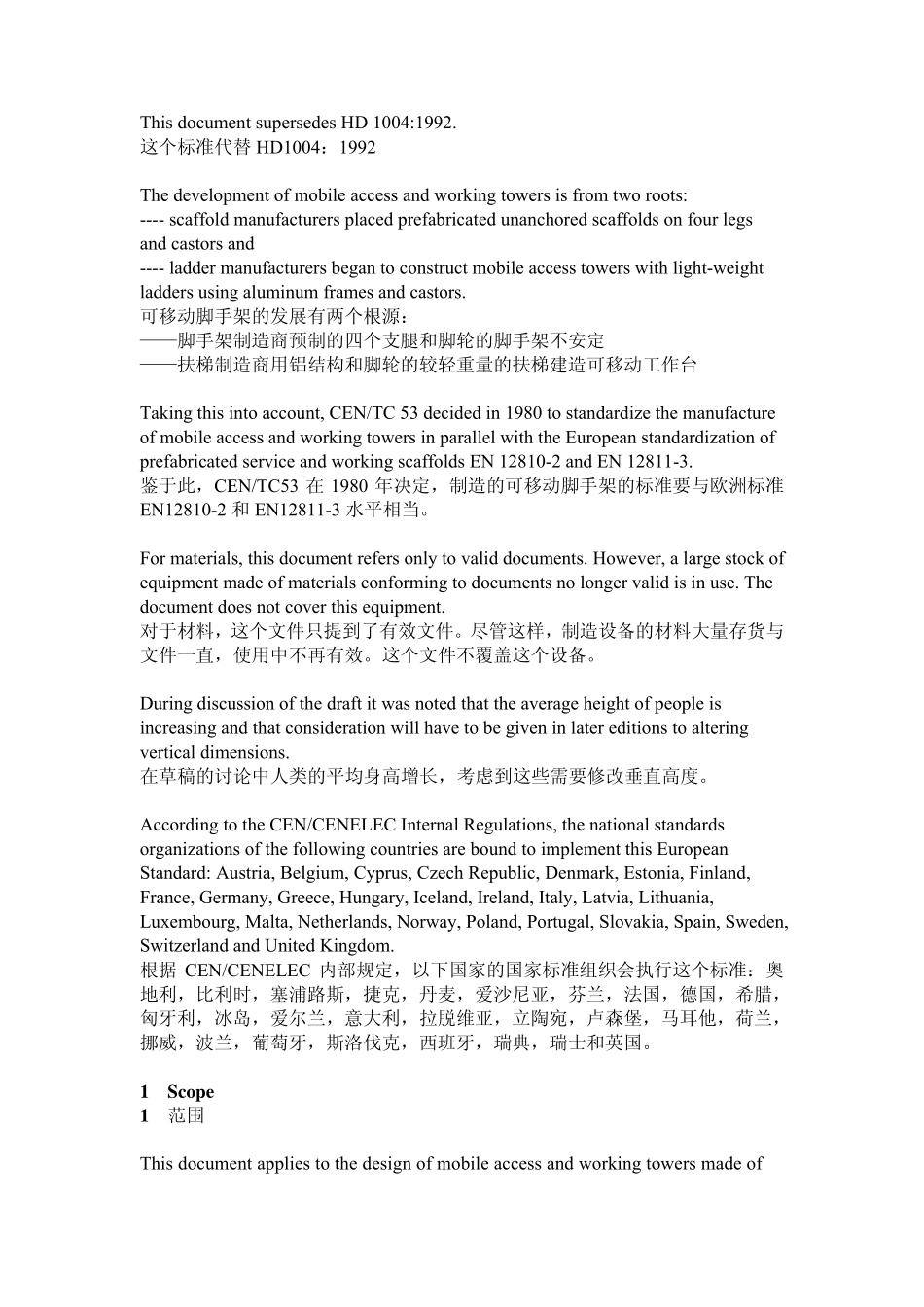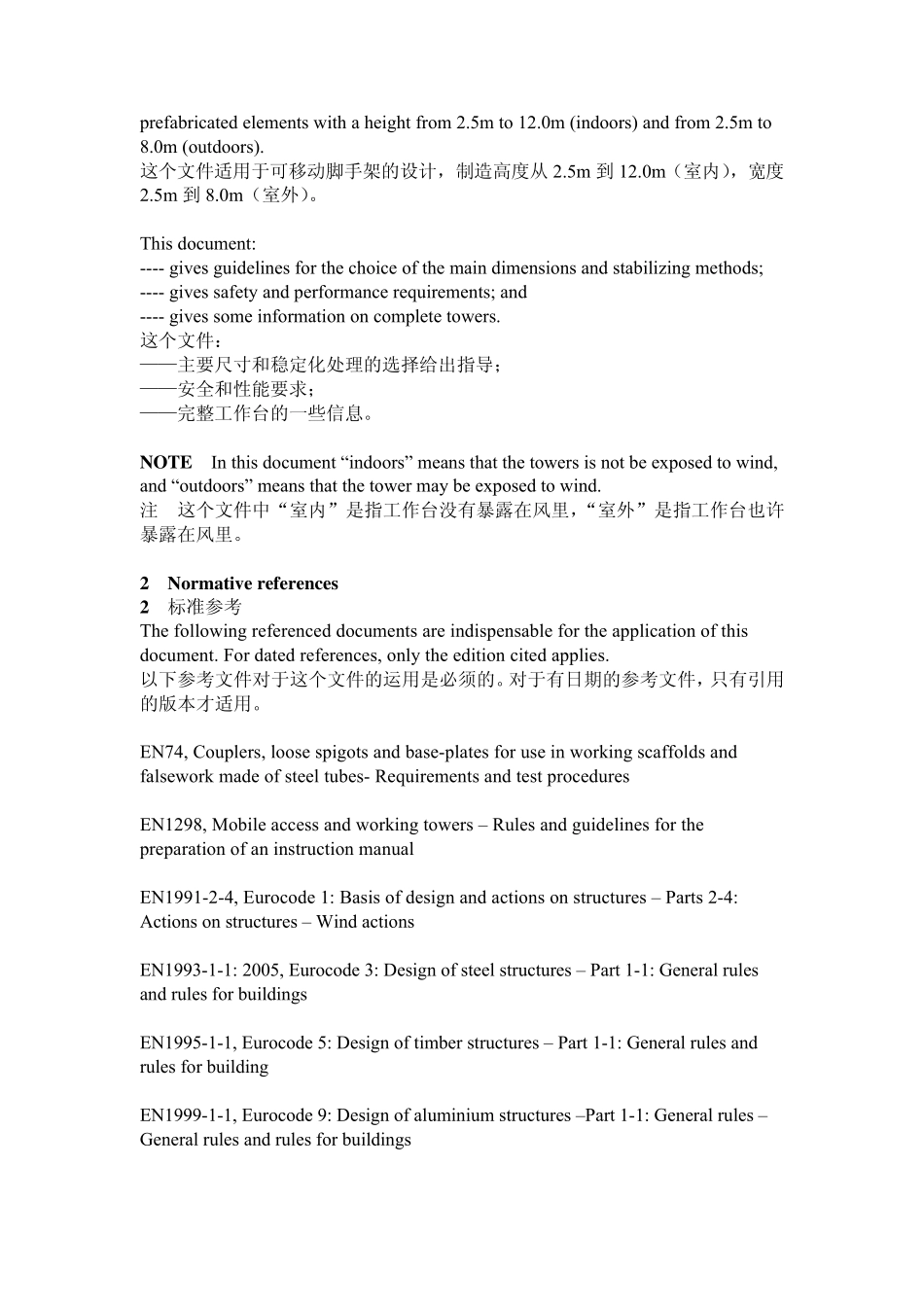Mobile access and working tower made of prefabricated elements – Materials, dimensions, design loads, safety and performance requirements 可移动工作台——材料,尺寸,设计负载,安全和性能要求 Contents 内容 Foreword 1 Scope 2 Normative references 3 Terns and definitions 4 Classification 5 Designation 6 Materials 7 General requirements 8 Requirements for structural design 9 Instruction manual 10 Marking 11 Structural design 12 Tests 13 Assessment Annex A (normative) Stiffness test on complete tower structure Annex B (informative) National A-deviations Bibliography Foreword 前言 This document (EN 1004:2004) has been prepared by Technical Committee CEN/TC 53”Temporary works equipment”, the secretariat of which is held by DIN. 这个文件(EN1004:2004)由技术委员会 CEN/TC53“临时工作设备”编制,有他的秘书处 DIN 持有。 This European Standard shall be given the status of a national standard, either by publication of an identical text or by endorsement, at the latest by June 2005, and conflicting national standards shall be withdrawn at the latest by June 2005. 这个欧洲标准是一个国家标准,最迟到 2005 年 6 月作为正文或文件出版,如果与国家标准有冲突将会被撤销,最迟到 2005 年 6 月。 This document supersedes HD 1004:1992. 这个标准代替HD1004:1992 The development of mobile access and working towers is from two roots: ---- scaffold manufacturers placed prefabricated unanchored scaffolds on four legs and castors and ---- ladder manufacturers began to construct mobile access towers with light-weight ladders using aluminum frames and castors. 可移动脚手架的发展有两个根源: ——脚手架制造商预制的四个支腿和脚轮的脚手架不安定 ——扶梯制造商用铝结构和脚轮的较轻重量的扶梯建造可移动工作台 Taking this into account, CEN/TC 53 decided in 1980 to standardize the manufacture of m...


